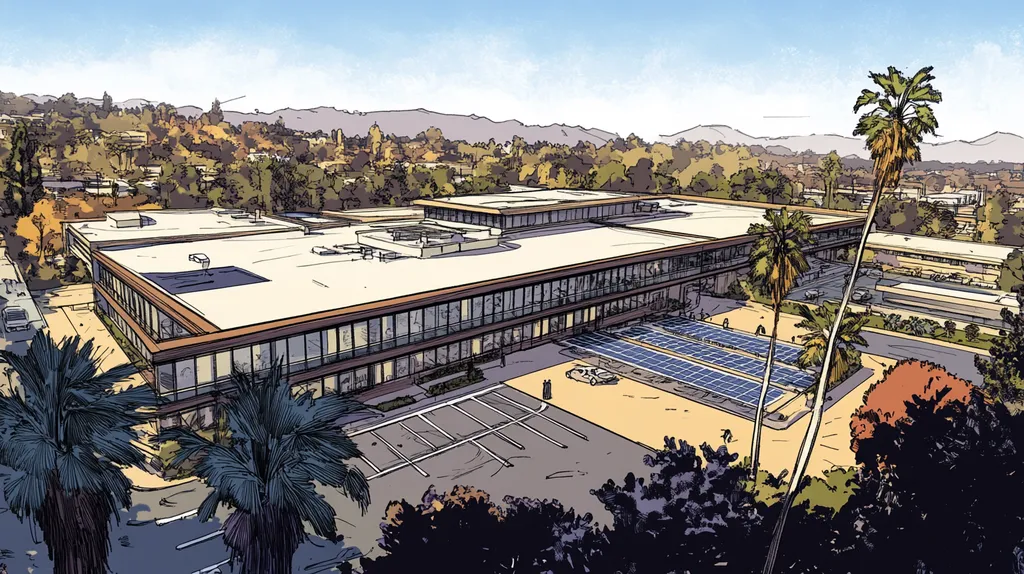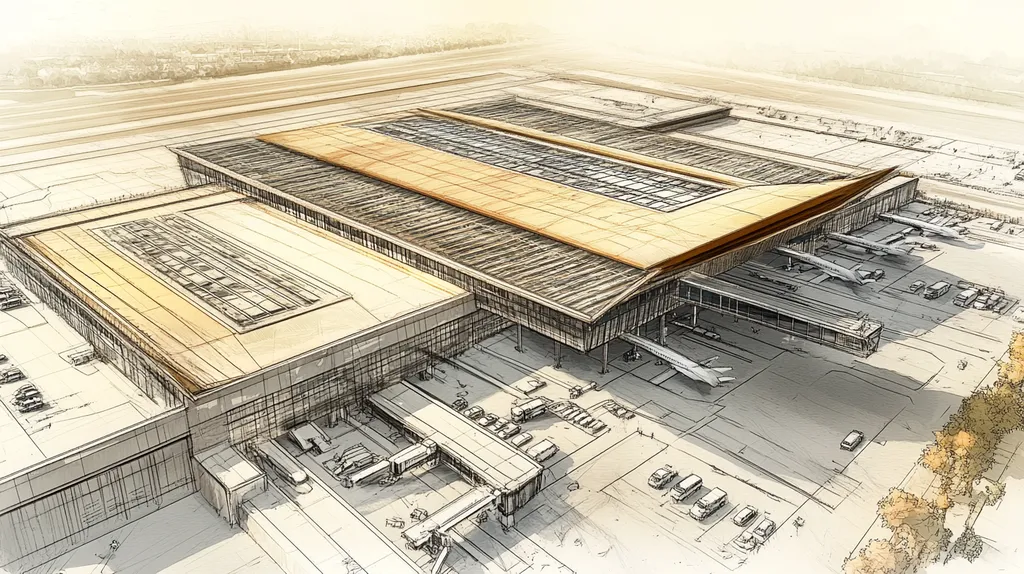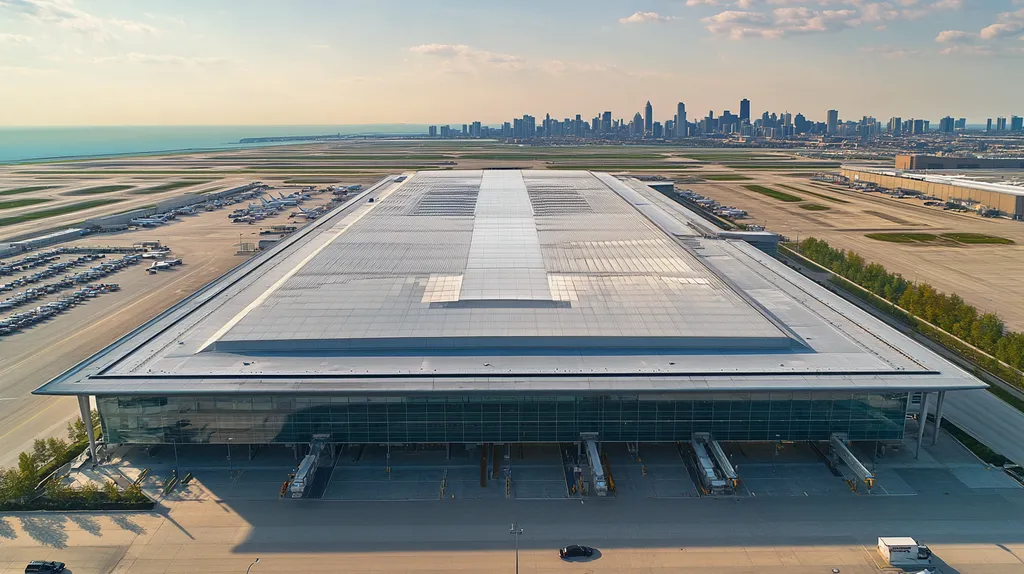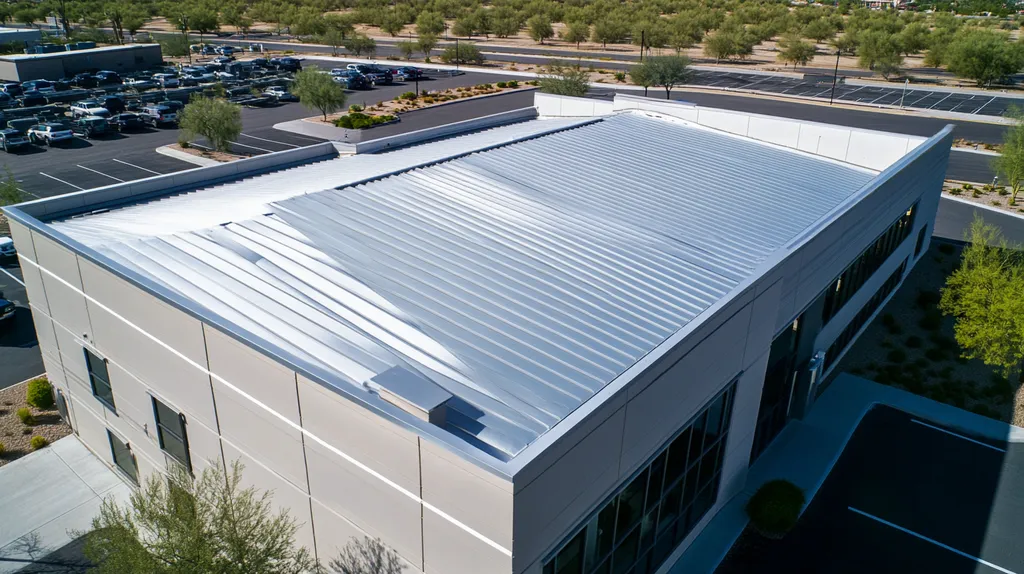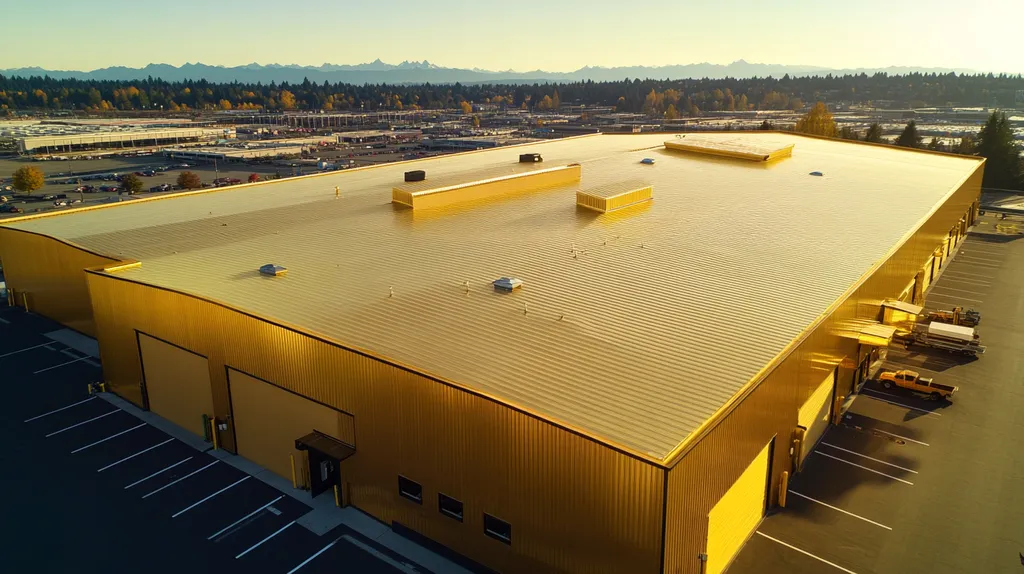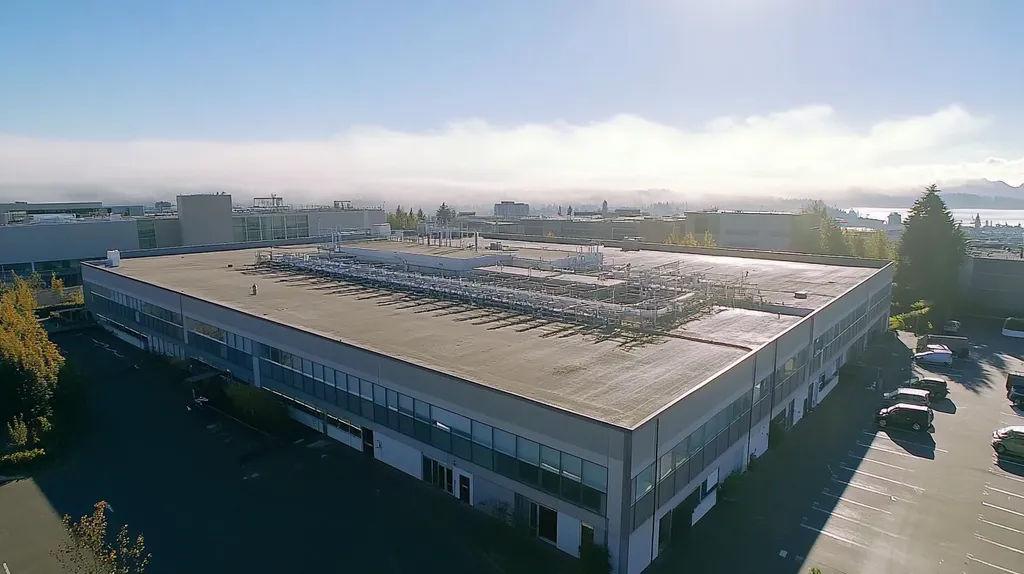For industrial facility managers, a roofing warranty isn’t just paperwork – it’s potentially millions in liability protection that hinges on understanding the fine print. With sustainable roofing systems costing $15-25 per square foot and warranties spanning decades, one misunderstood clause can void coverage faster than a thermal scan can spot a leak.
From material guarantees to workmanship warranties, today’s sustainable roofing landscape is a maze of technical terms, maintenance requirements, and performance metrics that directly impact your bottom line.
This guide cuts through the marketing hype to deliver exactly what facility managers need to know about protecting their sustainable roofing investments – before signing on the dotted line.
SECTION 1: THE BASICS EXPLAINED
Let’s cut through the marketing fluff: a roof warranty isn’t just another piece of paperwork cluttering your desk drawer. It’s your financial shield against disasters that can cost upwards of $100,000 in damages and weeks of business disruption. While manufacturers love touting their “revolutionary” sustainable roofing materials, what really matters is the fine print that determines whether you’re covered when things go sideways.
What It Is (In Plain Language)
A sustainable roofing warranty is your insurance policy against material failures and installation blunders. Think of it as a legally binding promise that your eco-friendly roof won’t turn into an expensive bird bath or start sprouting mushrooms.
These documents come in two flavors: material warranties (covering the actual roof components) and workmanship warranties (covering installation). Some manufacturers bundle them together, while others split them apart like a corporate restructuring.
The “sustainable” part means your warranty might include specific performance guarantees for things like solar reflectivity, thermal resistance, or recycled content percentages. Just don’t expect coverage for that rooftop garden that wasn’t in the original specs.
Why It Matters (To Your Building)
Roofing warranties incentivize manufacturers to continuously improve their systems’ performance, both in product quality and installation practices. This focus on improvement directly benefits building owners through better long-term roof performance and sustainability. (source: Building Enclosure Online)
A solid warranty can mean the difference between a quick, covered repair and draining your capital improvement budget. When a 20,000-square-foot roof starts leaking, you’ll be glad you understood exactly what’s covered.
Beyond protecting your investment, warranties often require regular maintenance and inspections. This forced discipline actually extends roof life and prevents minor issues from becoming major headaches.
How It Works
Filing a warranty claim isn’t like ordering takeout – there’s a strict protocol to follow. Most warranties require immediate notification of problems, professional inspection, and documented maintenance records.
The warranty clock starts ticking the day your roof installation is completed. Coverage typically ranges from 10 to 30 years, depending on the materials and system type. But read the exclusions carefully – Mother Nature’s worst tantrums might not be covered.
Sustainable roofing systems often come with performance guarantees tied to specific metrics. These might include energy efficiency ratings, water retention capabilities, or material longevity benchmarks.
Maintaining warranty validity requires following manufacturer-specified maintenance schedules. Skip a required inspection or use unauthorized repairs, and you might void your coverage faster than you can say “change order.”
SECTION 2: PRACTICAL APPLICATIONS
Let’s get real: sustainable industrial roofing isn’t just about slapping some solar panels on your building and calling it green. It’s about making smart choices that protect both your bottom line and the planet. With commercial buildings accounting for nearly 40% of U.S. energy consumption, your roof choice can either be your biggest energy vampire or your secret weapon for slashing operating costs.
Common Uses & Examples
Forget the greenwashing hype – sustainable roofing serves real-world needs across every industrial sector. From food processing plants dealing with extreme temperature swings to distribution centers trying to tame their cooling costs, these systems deliver measurable results.
Cool roofs are the workhorses of the sustainable roofing world. They reflect up to 80% of solar radiation, turning what could be a massive heat sink into a shield against summer cooling costs. Just don’t expect miracles if you’ve got more AC units than actual roof space.
Green roofs aren’t just for tech campuses trying to look eco-friendly in their PR photos. When properly engineered, they can handle stormwater management better than traditional systems while providing superior insulation. They also last twice as long as conventional roofs – assuming you don’t let the maintenance crew treat them like their home garden.
GAF’s sustainable roofing systems offer warranties ranging from 10 to 35 years, with comprehensive coverage for both materials and labor on qualified installations. Their Diamond Pledge guarantee even covers unlimited repair costs – something your CFO will appreciate more than any sustainability award. (source: GAF)
When You Need It Most
The best time to think about sustainable roofing isn’t when your existing roof springs its first leak. It’s during initial planning or scheduled replacements when you can maximize the system’s benefits without emergency pricing premiums.
Major facility expansions present perfect opportunities for sustainable upgrades. Why? Because you can integrate new systems with existing infrastructure without the costly retrofit dance that comes with piecemeal improvements.
Energy audit seasons are prime time for roof evaluations. If your HVAC costs are climbing faster than a drone with a sugar rush, your roof might be the culprit – and sustainable solutions could be your rescue plan.
Building code updates often trigger reassessment needs. Instead of just meeting minimum requirements, sustainable systems can future-proof your facility against increasingly strict energy regulations.
Interactions With Other Systems
Your roof doesn’t exist in splendid isolation – it’s part of a building ecosystem that either works together or fights itself. Understanding these interactions prevents expensive mistakes, like installing a reflective roof that blinds your neighbors or compromises your solar panel efficiency.
HVAC systems and sustainable roofing should be best friends, not awkward strangers at a networking event. The right roof can reduce your cooling load by up to 25%, but only if your mechanical systems are adjusted to take advantage of the reduced heat gain.
Water management systems need to play nice with your sustainable roof. That means ensuring your drainage solutions can handle both typical rainfall and those “once-in-a-century” storms that seem to happen every other year now.
Building automation systems should monitor roof performance metrics. If your “smart” building can tell you when someone left a break room light on but can’t detect a developing roof issue, you’re missing a crucial connection.
SECTION 3: KEY TERMINOLOGY DECODED
If you think roofing terminology is just a collection of fancy words to justify expensive proposals, think again. Every year, building owners lose millions because they misunderstood critical warranty terms or got bamboozled by technical jargon. When your 50,000-square-foot roof is hemorrhaging energy costs and your warranty claim gets denied over a technicality, those definitions suddenly become very expensive reading material.
Essential Terms Explained
Let’s strip away the corporate legalese and get to what these terms actually mean for your building. A “material warranty” covers the stuff your roof is made of, while a “workmanship warranty” covers the humans who installed it. Think of it as the difference between your car’s parts warranty and the mechanic’s labor guarantee.
“Pro-rated” means your coverage shrinks faster than your patience with roof leaks. By year 15 of a 20-year warranty, you might only get 25% coverage. “Non-prorated” maintains full coverage throughout the warranty period – like having full insurance even when your car’s a decade old.
“Exclusions” are the warranty’s ejector seats – conditions that let manufacturers bail out of coverage. These often include things like “ponding water” (puddles that stick around longer than unwanted houseguests) and “improper maintenance” (aka not following their byzantine care instructions).
The term “system warranty” means everything’s covered as one unit, not piece by piece. It’s like having comprehensive insurance instead of separate policies for your tires, engine, and windshield.
Industry Jargon Translated
“Single-ply” isn’t a desperate dating status – it’s a roofing membrane that comes in one layer. Popular varieties include TPO (think: white plastic that reflects heat) and EPDM (basically rubber on steroids).
“Built-up roofing” means layers stacked like a construction-grade sandwich. Each layer serves a purpose, from waterproofing to UV protection. Just don’t expect to find lettuce and tomato in there.
“Cool roof” isn’t about impressing the neighborhood – it’s about reflecting sunlight instead of absorbing it. These systems can reject up to 80% of solar heat, making your AC system’s job easier than a traffic cop at 3 AM.
“Solar reflectance index” (SRI) measures how well your roof bounces back sunlight. Higher numbers mean lower cooling bills, but don’t get too excited – a mirror-finish roof might blind passing aircraft.
Measurement & Units Simplified
A roofing “square” equals 100 square feet, not the geometric shape your kid draws. When contractors talk about “30 squares,” they mean 3,000 square feet of coverage, not a neighborhood of boxes.
“Mil” thickness has nothing to do with military specifications. It’s one-thousandth of an inch, and in roofing, more mils usually means better durability. A 60-mil membrane is twice as thick as a 30-mil one, not just twice as expensive.
“R-value” measures insulation effectiveness, not your roof’s approval rating. Higher numbers mean better insulation, but doubling the R-value doesn’t necessarily mean doubling your energy savings.
“Wind uplift resistance” ratings tell you how well your roof stays attached during storms. Think of it as your roof’s grip strength – the higher the rating, the less likely you’ll find your membrane trying to become a sail.
SECTION 4: DECISION FACTORS
Let’s face reality: choosing the wrong sustainable roofing system can burn through your capital budget faster than a factory fire. With replacement costs averaging $15-25 per square foot for industrial facilities, a hasty decision on a 100,000-square-foot roof could become a multi-million-dollar mistake. Beyond the price tag, picking the wrong system can saddle you with decades of maintenance headaches and energy inefficiencies that make your utility bills look like phone numbers.
Cost Considerations
Stop falling for the low-bid trap. That bargain-basement quote might look attractive now, but it’s about as reliable as a chocolate teapot in July. The real cost of a sustainable roof system spans decades, not just the installation week.
Initial expenses are just the cover charge to this party. Quality sustainable systems typically run 15-30% higher upfront than traditional options, but they’re designed to slash your energy costs by up to 40% annually. That’s not creative accounting – it’s strategic investment.
Maintenance isn’t optional – it’s your insurance policy against premature failure. Budget for regular inspections, cleaning, and minor repairs. Skip this step, and you’ll learn why “deferred maintenance” is just contractor-speak for “future emergency.”
Factor in the hidden savings: reduced HVAC strain, extended system lifespan, and potential tax incentives. Some jurisdictions offer property tax breaks for certified sustainable roofing that can offset your initial investment faster than a solar panel in Death Valley.
Performance Trade-offs
Every roofing choice comes with trade-offs. That cutting-edge green roof might look fantastic in your sustainability report, but it demands more structural support than a heavyweight champion. Know what you’re signing up for before the crane arrives.
Climate compatibility trumps trend-chasing every time. A reflective roof that’s perfect for Phoenix could turn your Minneapolis building into an ice palace. Local weather patterns should drive your material choices, not glossy marketing brochures.
Warranty obligations drive long-term performance standards, forcing manufacturers to continuously improve their systems while maintaining sufficient financial reserves for potential claims. This accountability translates directly into better product quality and installation practices. (source: Roofing Contractor)
Consider operational impacts beyond the roof itself. That super-reflective membrane might save on cooling costs, but it could also create glare that turns neighboring buildings into solar ovens. Balance all performance factors, not just the obvious ones.
Lifespan & Durability Factors
Durability isn’t just about thickness – it’s about system design. A properly specified sustainable roof should last 20-30 years, while poor material choices can fail faster than a New Year’s resolution.
Environmental stress matters more than calendar age. Your roof ages in dog years when facing extreme temperatures, chemical exposure, or frequent maintenance traffic. Design for your worst-case scenarios, not average conditions.
Installation quality determines whether you’ll get maximum lifespan or premature gray hair. The best materials in the world won’t help if they’re installed like a DIY weekend project. Demand certified installers who know the difference between a heat weld and a hot mess.
Future-proof your investment by considering adaptability. The roof that’s perfect today might need modifications for tomorrow’s solar panels or green initiatives. Build in flexibility now, or pay for retrofits later.
SECTION 5: COMMON CHALLENGES
Let’s get real: sustainable roofing failures can torpedo your business faster than a CFO’s heart rate during tax season. When a 100,000-square-foot roof starts showing problems, you’re not just looking at repair costs – you’re facing potential inventory damage, production shutdowns, and enough finger-pointing to staff a traffic control team. Industry data shows that 40% of all commercial roofs fail before their warranty expires, usually because someone ignored warning signs that were more obvious than a neon sign in a library.
Frequent Problems & Solutions
Membrane punctures aren’t just holes in your roof – they’re holes in your budget. Every penetration, from dropped tools to poorly mounted HVAC units, creates vulnerability points that can turn your warehouse into an impromptu water park.
Poor drainage design transforms your roof into a swimming pool without the fun parts. When water sits longer than an unwanted houseguest, it can add thousands of pounds of unplanned weight and create perfect conditions for leaks that play hide-and-seek with your maintenance team.
Installation shortcuts are like financial time bombs with variable fuses. That contractor who promised to save you 20% probably wasn’t talking about the extra repairs you’ll need in year three when seams start failing like New Year’s resolutions in February.
Warranty compliance isn’t optional – it’s your financial safety net. Many manufacturers now require documented maintenance programs backed by substantial financial reserves to ensure long-term performance and protect against premature system failures. (source: Roofing Contractor)
Warning Signs To Watch For
Surface blisters aren’t beauty marks – they’re distress signals from your membrane screaming for attention. These bubbles under your roofing material can expand faster than your maintenance budget if ignored.
Flashing failures around penetrations are like neon “Water Welcome Here” signs. When metal components start pulling away from walls or curbs, they’re not being antisocial – they’re warning you about impending leaks.
Seam separation isn’t your roof’s attempt at social distancing. These gaps in your membrane’s first line of defense can turn from hairline cracks to grand canyons faster than you can say “capital expenditure request.”
Energy bill spikes aren’t just inflation at work. When your HVAC system starts running like it’s training for a marathon, your roof insulation might be failing its one job – keeping outside temperatures where they belong.
Preventative Approaches
Regular inspections aren’t a luxury – they’re cheaper than emergency repairs at midnight during a thunderstorm. Schedule comprehensive checks at least twice yearly, focusing on high-stress areas like drainage points and mechanical equipment mounts.
Maintenance documentation needs to be more detailed than your coffee order. Track every inspection, repair, and modification like you’re writing the roof’s biography – because when warranty claims arise, that paper trail becomes more valuable than gold.
Staff training shouldn’t stop at “don’t drop tools on the membrane.” Everyone accessing your roof needs to understand basic damage prevention, from HVAC technicians to window washers. One untrained contractor can create more problems than a rookie juggler in a china shop.
Technology integration isn’t just about looking modern. Moisture sensors, drone inspections, and thermal imaging can spot problems before they become catastrophes – assuming someone actually checks the data more often than their social media feed.
SECTION 6: NEXT STEPS & RESOURCES
Let’s be brutally honest: if you’re treating your sustainable roofing warranty like that 200-page software agreement you blindly accepted, you’re playing Russian roulette with your facility’s future. With replacement costs running $500,000+ for typical industrial buildings, getting this wrong isn’t just expensive – it’s potentially career-ending. The difference between a warranty that protects you and one that leaves you exposed often comes down to asking the right questions before you need answers.
Questions To Ask Providers
Skip the fluffy marketing presentations and drill down to what matters. Who exactly handles warranty claims – the manufacturer’s A-team or some third-party call center that thinks TPO is a Star Wars character? Get specific names, numbers, and response time guarantees.
Demand clarity on maintenance requirements. If the warranty demands monthly inspections by certified technicians wearing purple socks during a full moon, you need to know before signing. These requirements aren’t suggestions – they’re your warranty’s survival conditions.
Ask about the warranty reserve fund. If your provider’s warranty backing consists of good intentions and a coffee can full of loose change, you might want to keep shopping. Financial stability matters when you’re counting on decades of coverage.
GAF offers comprehensive warranties ranging from 10 to 35 years, including their Diamond Pledge guarantee that covers unlimited repair costs with transferable coverage – exactly the kind of specific, measurable commitment you should demand. (source: GAF)
Industry Standards & Guidelines
Standards aren’t just bureaucratic busy-work – they’re your baseline for separating legitimate warranties from elaborate confetti. The NRCA guidelines should be your minimum acceptable threshold, not your aspiration.
ASTM testing requirements exist for a reason. If your provider starts dancing around which standards they meet, consider it the warranty equivalent of a check engine light – something’s wrong under the hood.
Energy Star certification matters for sustainable systems, but don’t let it be your only metric. A roof can meet Energy Star requirements and still perform like a solar oven if it’s wrong for your climate zone.
Local building codes aren’t suggestions, they’re warranty survival requirements. One non-compliant detail can void your coverage faster than a skateboarding competition on your membrane.
Further Learning Simplified
Stop treating roofing education like a punishment. Modern resources range from interactive online courses to virtual reality installations – no more falling asleep during PowerPoint presentations from 1997.
Professional organizations offer certification programs that translate complex warranty concepts into actionable knowledge. These aren’t just resume decorations – they’re your shield against expensive mistakes.
Industry publications have evolved beyond dry technical manuals. Today’s resources include podcasts, video series, and interactive troubleshooting guides that won’t put you into a coma.
Build your network before you need it. Connect with other facility managers, join professional groups, and participate in industry forums. When warranty issues arise, having a knowledge network beats panic-Googling at 2 AM.
The Bottom Line
With sustainable industrial roofing warranties now covering installations worth millions, the stakes for understanding your coverage have never been higher.
The difference between comprehensive protection and worthless paperwork often comes down to three critical factors: properly documented maintenance, strict adherence to warranty requirements, and working with financially stable providers who maintain substantial warranty reserves.
The sustainable roofing industry isn’t just growing – it’s fundamentally reshaping warranty expectations with performance guarantees tied to specific environmental metrics.
As regulations tighten and energy costs climb, choosing the right sustainable roofing system backed by a robust warranty isn’t just smart business – it’s essential risk management that can protect your facility for decades.
The future of industrial roofing is sustainable by default – make sure your warranty coverage evolves to match.
FREQUENTLY ASKED QUESTIONS
Q. What is a warranty for a commercial roof?
A. A warranty is your financial safety net against roof disasters. It’s a promise from manufacturers ensuring that your roofing materials won’t shower you with leaks or mold, provided you follow their rules. Most warranties spell out what’s covered, how long you’ll be protected, and the steps you must take if something goes wrong.
Q. When do I need an industrial roof upgrade?
A. Don’t wait for your roof to leak like a sieve. The best time to upgrade is during scheduled replacements or expansions when costs are predictable. If energy audits reveal sky-high bills, it’s another sign your roof might be more liability than asset, suggesting it’s time for a change.
Q. What does “material warranty” mean for my industrial roof?
A. Material warranty covers the actual stuff your roof is made of. If your roofing material starts acting out, this warranty typically protects you against spontaneous breakdowns or failures. Just remember, it won’t save you if you neglect your maintenance or use unauthorized repairs, which can quickly void your coverage.
Q. How can poor installation affect an industrial roof warranty?
A. Poor installation can be your warranty’s worst enemy. If the roofing crew cuts corners or skips essential steps, you might find yourself in a warranty black hole when issues pop up. Manufacturers usually demand certified installation, so always hire pros who know their shingles from their shingles to keep that warranty intact.
Q. What common challenges affect commercial roof warranties?
A. Common challenges include membrane punctures, poor drainage, and installation shortcuts. Ignored warning signs can lead to significant problems that cost a fortune to fix. Regular maintenance won’t just catch these issues early; it ensures you remain in warranty compliance, keeping your financial safety net intact for true emergencies.
Q. When should I review my industrial roof warranty?
A. Review your warranty before you need it—don’t wait for a crisis. Schedule reviews during energy audits or when planning major repairs. Keeping your warranty fresh in your mind helps you understand what you’re covered for and highlights any responsibilities so there are no nasty surprises when the time comes to file a claim.
Q. How can I prevent warranty issues with my commercial roof?
A. Prevent warranty issues by committing to regular inspections and maintenance. Keep detailed records of all work done—imagine writing the epic saga of your roof. Train staff on basic damage prevention habits, and consider technology like moisture sensors to spot trouble before it becomes a chaotic crisis.

